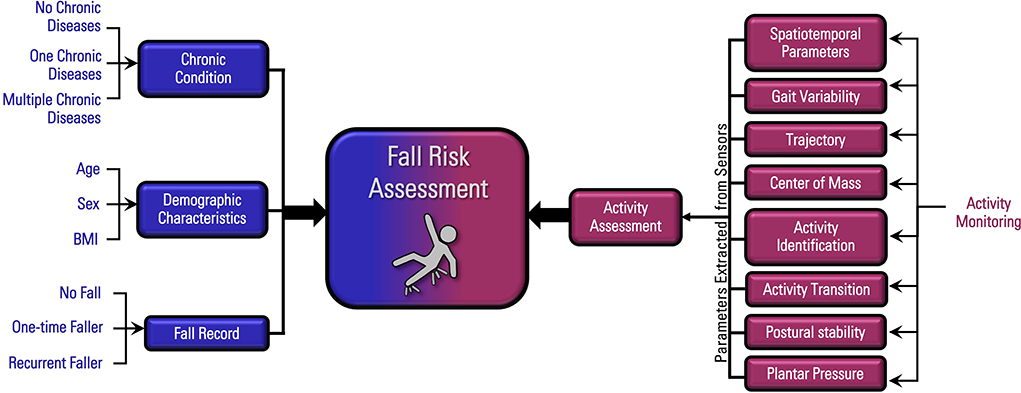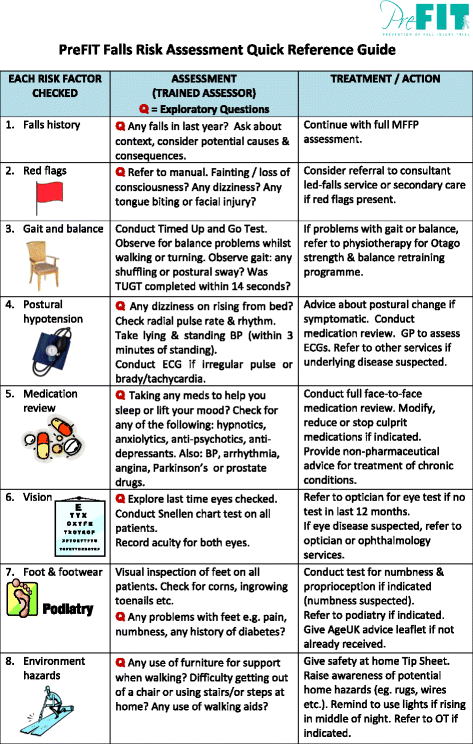The Of Dementia Fall Risk
Table of Contents4 Easy Facts About Dementia Fall Risk Described9 Easy Facts About Dementia Fall Risk DescribedThe Facts About Dementia Fall Risk UncoveredThe Basic Principles Of Dementia Fall Risk
An autumn risk assessment checks to see exactly how most likely it is that you will certainly fall. It is primarily done for older grownups. The evaluation typically consists of: This consists of a series of questions regarding your total wellness and if you've had previous falls or issues with equilibrium, standing, and/or strolling. These devices test your stamina, balance, and stride (the method you walk).STEADI consists of screening, evaluating, and treatment. Treatments are recommendations that might reduce your risk of dropping. STEADI includes 3 steps: you for your danger of succumbing to your threat factors that can be enhanced to try to stop drops (for instance, equilibrium problems, damaged vision) to reduce your risk of dropping by using efficient techniques (for instance, supplying education and sources), you may be asked a number of inquiries consisting of: Have you dropped in the past year? Do you really feel unstable when standing or strolling? Are you stressed over dropping?, your company will examine your toughness, equilibrium, and stride, making use of the adhering to loss evaluation tools: This examination checks your gait.
Then you'll sit down once again. Your service provider will inspect exactly how long it takes you to do this. If it takes you 12 seconds or even more, it might imply you go to greater risk for an autumn. This examination checks strength and equilibrium. You'll being in a chair with your arms crossed over your breast.
Relocate one foot midway onward, so the instep is touching the big toe of your various other foot. Move one foot totally in front of the other, so the toes are touching the heel of your other foot.
The Ultimate Guide To Dementia Fall Risk
A lot of drops take place as a result of several adding factors; as a result, managing the danger of falling begins with identifying the factors that add to drop danger - Dementia Fall Risk. Several of one of the most relevant danger aspects include: Background of prior fallsChronic medical conditionsAcute illnessImpaired gait and equilibrium, lower extremity weaknessCognitive impairmentChanges in visionCertain high-risk medications and polypharmacyEnvironmental factors can likewise enhance the danger for falls, consisting of: Inadequate lightingUneven or harmed flooringWet or slippery floorsMissing or harmed handrails and order barsDamaged or improperly equipped tools, such as beds, wheelchairs, or walkersImproper use assistive devicesInadequate guidance of individuals residing in the NF, consisting of those that show aggressive behaviorsA effective autumn danger management program requires a detailed professional evaluation, with input from all members of the interdisciplinary group

The care strategy must likewise consist of treatments that Get More Information are system-based, such as those that advertise a risk-free setting (proper illumination, handrails, get bars, etc). The effectiveness of the interventions must be reviewed periodically, and the treatment strategy modified as necessary to show changes in the fall risk analysis. Carrying out an autumn danger management system making use of evidence-based finest practice can decrease the prevalence of drops in the NF, while limiting the potential for fall-related injuries.
All about Dementia Fall Risk
The AGS/BGS standard recommends evaluating all adults aged 65 years and older for loss risk yearly. This testing consists of asking clients whether they have actually fallen 2 or more times in the past year or looked for medical attention for an autumn, or, if they have not fallen, whether they really feel unsteady when strolling.
People who have fallen once without injury must have their equilibrium and gait examined; those with gait or equilibrium irregularities need to receive additional analysis. A background of 1 fall without injury and without stride or equilibrium issues does not call for more analysis past ongoing annual fall danger testing. Dementia Fall Risk. A fall threat evaluation is called for as part of the Welcome to Medicare examination

An Unbiased View of Dementia Fall Risk
Recording a falls background is one of the high quality indicators for autumn avoidance and administration. A critical component of threat assessment is a medicine evaluation. Numerous courses of medications boost loss danger (Table 2). this website copyright medications in certain are independent forecasters of drops. These drugs have a tendency to be sedating, change the sensorium, and harm balance and stride.
Postural hypotension can usually be relieved by lowering the dose of blood pressurelowering medications and/or quiting drugs that have orthostatic hypotension as an adverse effects. Use above-the-knee assistance hose and copulating the head of the bed raised might also reduce postural decreases in high blood pressure. The recommended components of a fall-focused physical exam are revealed in Box 1.

A Yank time higher than or equal to 12 secs suggests high autumn threat. Being incapable to stand up from a chair of knee elevation without using one's arms indicates raised fall danger.